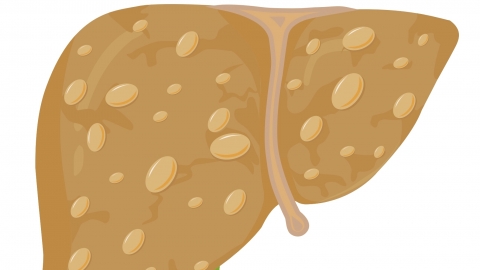What should I do if there are more gallbladder polyps?
Under normal circumstances, an increase in gallbladder polyps may be caused by improper diet, long-term熬夜 and irregular作息, chronic cholecystitis, coexisting gallstones, or progression of gallbladder adenomyosis. Depending on the specific situation, patients can improve their condition through general management, medication, or surgical treatment. A detailed analysis is as follows:

1. Improper Diet
Long-term consumption of high-cholesterol and high-fat foods increases cholesterol levels in bile, leading to cholesterol deposition on the gallbladder wall, which may form polyps that gradually increase in number. Adjusting dietary habits by reducing intake of animal offal and fried foods, increasing consumption of vegetables and fruits such as celery, spinach, and apples, maintaining regular meals, and avoiding overeating can help prevent further development.
2. Long-Term熬夜 and Irregular Sleep Patterns
Staying up late disrupts the body's metabolic rhythm, affecting bile secretion and excretion. Bile stasis irritates the gallbladder wall, promoting the formation and growth of polyps. Establishing a regular sleep schedule, ensuring 7–8 hours of sleep each night, avoiding late-night sleeping, and drinking water upon waking can help promote bile circulation.
3. Chronic Cholecystitis
Prolonged inflammation of the gallbladder causes mucosal hyperplasia of the gallbladder wall, resulting in inflammatory polyps that gradually increase. Under medical guidance, medications such as ursodeoxycholic acid capsules, Xiaoyan Lidan tablets, or Jin Dan tablets may be used to reduce inflammation. Regular follow-up with gallbladder ultrasound is recommended to monitor changes in polyps.
4. Gallstones with Concurrent Irritation
Gallstones repeatedly rub against the gallbladder wall, damaging the mucosa and triggering inflammation, which promotes polyp formation and growth. Under medical supervision, medications such as Danshi Litong tablets, Dahuang Li Dan capsules, or ursodeoxycholic acid tablets may be prescribed. If stones are large or symptoms occur frequently, laparoscopic cholecystectomy may be required, during which polyps are also addressed.
5. Progression of Gallbladder Adenomyosis
Gallbladder adenomyosis leads to thickening of the gallbladder wall and glandular hyperplasia, often accompanied by polyp-like changes that progressively increase. Regular ultrasound monitoring is necessary. If the lesion expands or polyps exceed 1 cm in size, cholecystectomy is recommended. After surgery, maintain a light diet and avoid strenuous physical activity.
In daily life, it is important to maintain a balanced diet and limit high-fat, high-cholesterol foods; adhere to a regular作息 and avoid长期熬夜; engage in moderate exercise such as walking or jogging to support metabolism; and undergo regular check-ups as advised by a physician to monitor the size and number of polyps. Seek prompt medical attention if symptoms such as abdominal pain or nausea occur.





